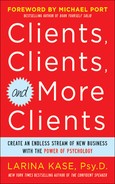Credibility and Your Brand
,Your brand consists of everything that makes up your identity: your logo, tagline, Web site, headshot, name (both your name and your business name), office décor, and so on. When people experience your brand, they will have a psychological reaction that includes their thoughts, beliefs, attitudes, feelings, perceptions, images, attention, and memory. To be seen as credible, one of the first things your brand must feel is genuine.
The power of authenticity and brand consistency
A few months ago I met with a new client, a professional law practice, at their offices in one of the suburbs of Philadelphia. Before meeting with them, I was afraid that they might be stuffy people who lacked warmth. Imagery on their Web site included architectural columns that seemed to represent a Center City courthouse. Nothing about their brand made me excited to meet them or work with them. If the situation were reversed and I were a potential client for their law practice, I doubt that I would have become a client.
I drove up to their office and was surprised to find that it was a beautiful old stone building—a house from about 1920 that had been converted to offices. The entrance was flanked by large hydrangea bushes with big blue flowers. The windows had flowerboxes with draping purple petunias and lime green scrolling sweet potato vine. When I met three of the partners, they were instantly warm and personable. They seemed smart, but their personalities were inconsistent with the attorneys in buttoned up navy pinstriped suits that their Web site image portrayed.
“Okay, before we get to anything else, we’ve got to address your online branding,” I started out by saying.
“Here you are in this beautiful location on Main Street. Many of your clients could walk here. You seem serious about your work but also seem like laid-back family-oriented people who care deeply about your immediate community. These are the things we need to emphasize in your branding. Instead, your Web site gives the appearance of a wannabe big-city corporate firm, something that you are not and should not be. There’s nothing wrong with emphasizing the benefits that come with being a large, powerful, exclusive cosmopolitan firm if that’s who you actually are. Your clients don’t want this or they would be driving into the city and going to one of those firms.”
We ended up making over not just their Web site but the unique selling proposition of their business, their personal styles, and their waiting area and offices to enhance their credibility and brand alignment. They attracted more ideal clients and developed relationships with other professionals. Perhaps most important, they had a greater sense of authenticity and realness. They felt more credible, which came across in all of their marketing.
The psychology of color and imagery
Color is one of the most powerful ways to influence the perception of you and your brand. Understanding how your audience responds to color enhances your credibility and likeability with them.
Toby Israel, an environmental psychologist and author of Some Place Like Home: Using Design Psychology to Create Ideal Spaces, gave The Myers-Briggs personality test to clients. The Myers-Briggs categorizes people on the basis of four dimensions: introvert/extrovert, intuiting/sensing, thinking/feeling, and judging/perceiving. Toby found that people who rated higher on the thinking dimension (versus feeling) preferred cooler colors and more modern styles in their designs, whereas people who rated higher on the feeling dimension preferred prefer warmer colors and wood.
If you see clients in your office, consider what kind of art to use and what color to paint your walls. These ideas can also be used for the design of your logo, colors, and selection of imagery to use on your Web site and in your social media branding. A 2009 study investigated whether personality features (using the “big five” personality domains: extroversion, agreeableness, conscientiousness, neuroticism, and openness) were related to preference for different types of art (including portraiture, abstract art, geometric art, and impressionism). Results from 3,254 participants showed that people who like abstract art tend to be sensation-seekers high on the openness personality domain. People high on openness tend to have a broad range of interests and active imaginations. If your clients are the types of people who like change, novelty, new experiences, and adventure, use artwork with abstract imagery. On the other hand, if these types of things are unsettling to your clients and they prefer stability and calm, then consider artwork with realistic imagery. This study also found that people who are extroverted enjoy art that has people or reminders of lots of people around. If you tend to work with actors, for example, the imagery on your Web site and in your office could include a lot of people. If, on the other hand, you tend to work with people who are more introverted, such as research scientists, you may not want to include imagery with a lot of people.
Another study found that brightly colored spaces such as red rooms created an excited state in the brain, which paradoxically lowered heart rates. Introverts and people already in a negative mood were more impacted than others, and their performance on tasks in these spaces suffered. People tended to report feeling more positive in red rooms than blue rooms, and essays they wrote in red rooms were more creative, but had more clerical errors.
